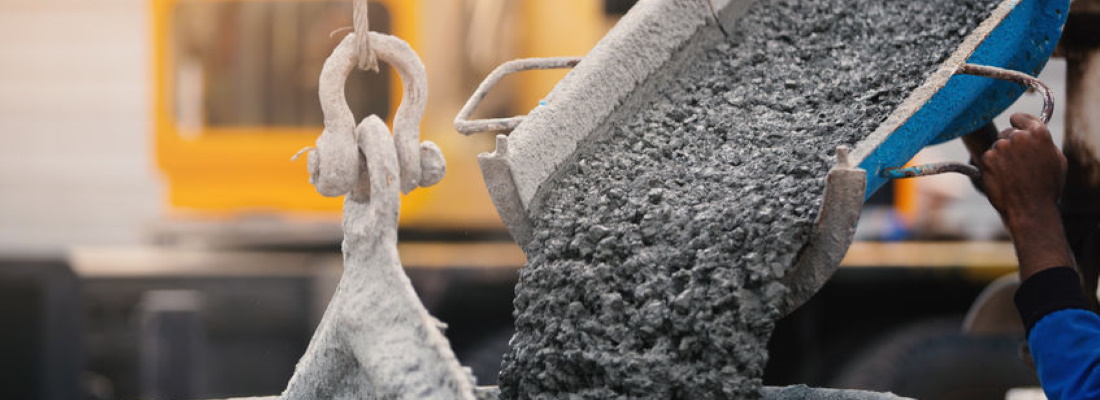One of the most widely used construction materials across the globe is concrete. It is easy to make, low-cost and strong. Concrete means that bridges can span for long stretches across land or water, levies can hold back flooding rivers and buildings can be so tall they seem to touch the sky. But, when was this fantastic substance discovered and how is it changing for the future?
The history of concrete and cement
We can’t deny that concrete has changed a lot since its first use but the Great Pyramids of Giza are just as monumental as the smart cement we are beginning to see today. Let’s take a brief look at the history of this wonderful construction material.
6500 BC – The Middle East has the earliest records of structures made from concrete. The Nabataea traders in Jordan and Syria created floors, underground cisterns and housing structures from concrete-like materials.
3000 BC – China and Egypt: In Egypt, dried bricks were made from mud and straw but gypsum and lime were also used to make mortars for the pyramids. The Great Pyramids have around 500,000 tons of the stuff! Around the same time, there was a type of cement used in the construction of the Great Wall of China.
600 BC – The Ancient Romans were actually the first to use concrete on a large scale. Within 400 years, they had implemented its use in the vast majority of their constructions. They used lime, volcanic ash and seawater for their mix. They put this in wooden forms, which hardened and were used as bricks. It’s down to these ingredients that Roman structures were able to stand for so long.
Middle Ages
After the end of the Roman Empire, there wasn’t any advancement in the use of concrete. In fact, the technique was seemingly lost until the 15th century when manuscripts describing its use were discovered.
18th-19th Century
The late 18th century saw a big leap in the technology with John Smeaton discovering a modern way of making hydraulic lime. Around 30 years after this, Joseph Aspdin created Portland cement. Concrete was mainly used in industrial buildings at this time and it wasn’t until the latter half of the 19th century that Portland cement was used in homebuilding.
What is concrete and how is it changing?
Concrete has three ingredients: cement, water and gravel. This ancient substance is now being adapted to be smarter and use new technology.
Engineers in New York have invented a new concrete that contains carbon fibres, which are strands of the atom. Carbon is an electrical conductor and so with these fibres contained within the concrete, it is possible to add electrical impulses. This means that the concrete can become a sensor!
Concrete as a sensor
With smart concrete, minute changes can be detected. The substance and monitor itself for stress and cracks. In the past, this was down to humans to inspect concrete structures like bridges, car parks and skyscrapers. Also, the inspectors were only able to see fractures after their occurrence. Smart concrete allows us to monitor stress in real-time.
Smart concrete allows scientists to measure the exact amount of deformity in concrete when it is subjected to large weights. When pressure is applied to the concrete, it compresses and the properties change. With compression, the slab becomes more conductive because electrical resistance is lower under pressure. Since this can be monitored, smart concrete can show engineers where weak spots are before any cracks occur.
Possible uses of smart concrete
The concept of smart concrete is only just taking off. There are so many exciting ideas on how this can be used. For example:
- Monitoring traffic
- Monitoring borders
- Weighing in motion
- Security in buildings
It is also expected that smart concrete will be used to manage building facilities. For example, you will be able to weigh a room in a building to see its occupancy in real-time. This can help to save energy and money as it will allow the heating, lighting and ventilation to be controlled appropriately to the room’s occupancy.
An example of how technology can be used with concrete
AI (artificial intelligence) technology can also be used to predict the strength of concrete. At London City Airport, an engine was used to predict when the critical strength of concrete will be reached. This was predicted just a few short hours from when the concrete was poured. This Converge prediction engine is able to give insight into how a material will perform. The real-time data means that construction companies to shorten their concrete cycles and improve efficiency onsite. This can make the construction process quicker because contractors know when it is ok to be able to tension slabs or strike formwork because they know when the concrete has reached its critical strength. The technology uses a database of curing data, local weather data and the monitoring data in real-time from being poured to predict this critical strength time. The accuracy is within 5%.
Concluding thoughts
Smart concrete is an example of how construction materials are evolving and is an example of how innovative use of modern technology is able to enhance and ancient material. Construction of structures has an enormous risk attached to it but inventions such as smart concrete can really help make structures to be safer. What’s more, inventions like the Converge engine can make construction much more efficient and timely.


